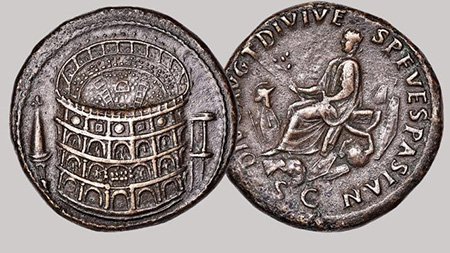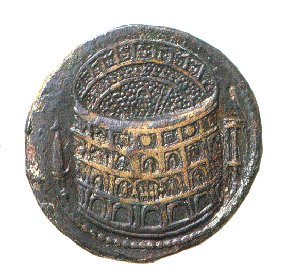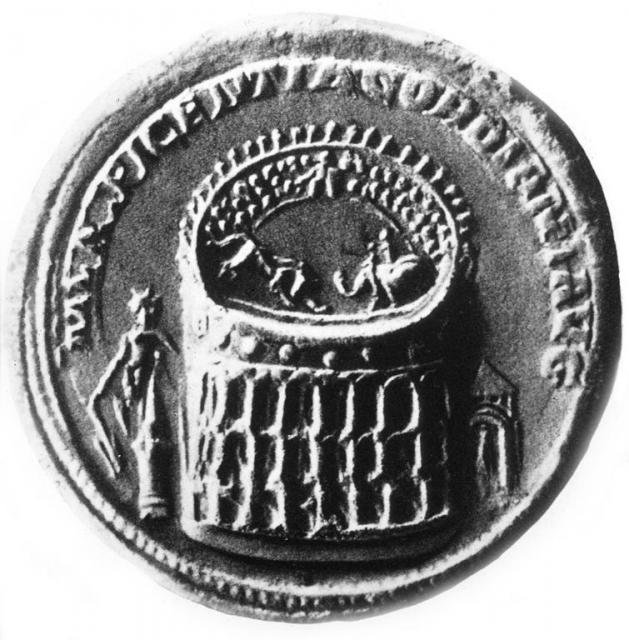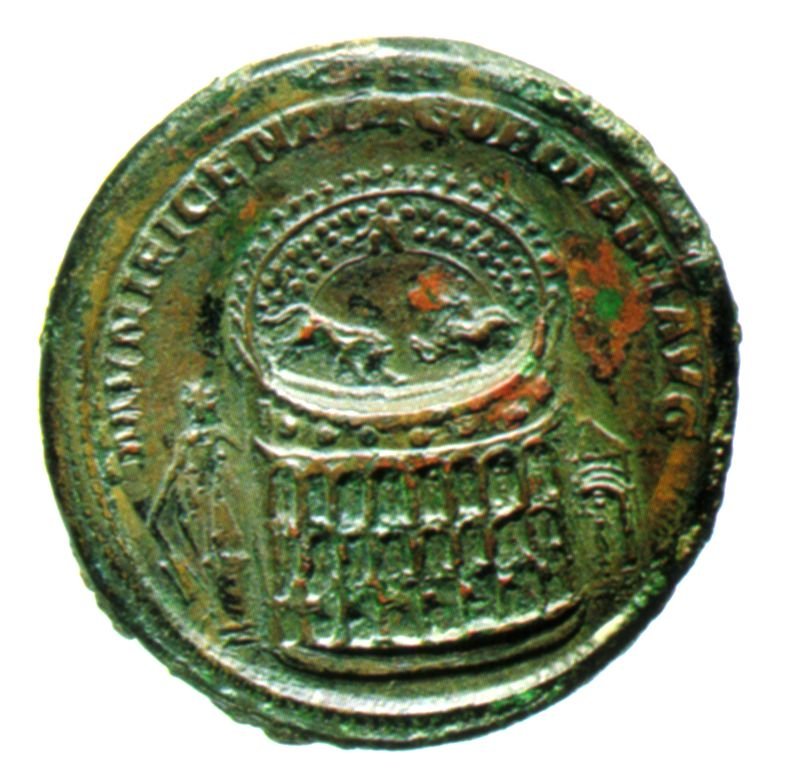It is reasonable to think
that even the ancients considered the Colosseum an architectural wonder, and that its image circulated in the ancient world. As far as we know, the only images of the amphitheatre we have from the antiquity are on some coins.
We have coins bearing the image of the Colosseum that were minted during the reigns of Titus, Severus Alexander and Gordianus, and they are very precious not only because they are rare, but also because they are in fact the only contemporary documentation of the Flavian amphitheatre.

(https://www.thetimes.co.uk/article/colosseum-coin-proves-a-rare-spectacle-5z5wpb7kj)
The first one is the Titus 80 AD bronze sestertius (above).
One can see the heads of the spectators in the cavea, which shows horizontal divisions, reflecting the seating for the different classes of spectators, and staircases that separate the sectors. The imperial throne is the half circle in the middle of the cavea (the lonely dot in its centre should be the emperor).
The representation is rather accurate; it is respected even the alternation of the clypea (the huge circular bronze shields once placed on the cornice of the fourth floor). One can see the wooden structure of the roof, and the presence of the quadriga, which supposedly was on top of the main NE entrance, is evident.
Other particulars are also interesting: on the left there is a representation of the Meta Sudans, a fountain that survived until 1934, and on the right a two-store portico. The latter is perhaps a representation of Titus’ baths, or a covered passage that connected the baths to the amphitheatre.

After Titus’ death, another bronze sestertius was coined by the mint of the Senate. It is very similar to the previous one, but Luciani saw a detail in it which maybe wasn’t in the first coinage: a set of garlands, or festoons all around the top (I say: could these be the rolled awnings of the velarium?).

The important thing in both coins is that the amphitheatre appears fully completed, and this disproves the traditional story of the fourth order (store) of the Colosseum being completed by Domitian.


About 150 years passed before the Colosseum was again represented on a coin. In 223, during Severus Alexander’s reign, the Senate mint produced gold, silver and bronze coins, all of the same type, probably to celebrate the restoration of the amphitheatre.
This coin appears in many variations: in some cases the clypea are missing, or there is a different number of staircases; however, the Meta Sudans and the portico are still there (150 years have passed by!) but behind the Meta appears the statue of the Triumphant Sun (which was later called Colossus) and the portico has only one floor. The golden aureus is a nice coin, but it presents a simplified version of the elements around the amphitheatre.

Around AD 240 another coin appeared, this time minted by the imperial mint of Gordian III. It is not really a coin, but a celebrative medallion, produced in a limited series. It seems that there are only two specimens remaining of this coin, and I happen to have two pictures of two different coins. Are they the ones ?
In any case, the elephant of the first coin seems an ostrich in the second one.

This time we can see the arena, and there is some action. There is a bull challenging an elephant, led by a man.
Outside, there is the usual Meta Sudans (why did Mussolini have to destroy it ?) and the Colossus. On the right, the portico.


The archaeologists also consider as contemporary representations of the amphitheatre the bas-relief of the famous tomb, called of the Haterii family (above) and the remaining pieces of the Forma Urbis, which was a huge marble map of the ancient city.

The Haterii tomb is in my opinion a rather fanciful design of the Colosseum (judge for yourself, the picture is here on the right). The Haterii were builders and they glorified their trade in the reliefs of the tomb, which is important also for the relief of a building machine. In fact, archaeologists are still discussing the matter of the buildings represented. Above is a drawing of the whole tomb.

The Colosseum has recently made a comeback on coins, with the Euro. In Italy the back of the 5 cents coin bears the typical postcard image of the monument.
Colour pictures of the ancient coins are taken from Luciani, Il Colosseo. B&W ones from AA.VV., Anfiteatro Flavio
